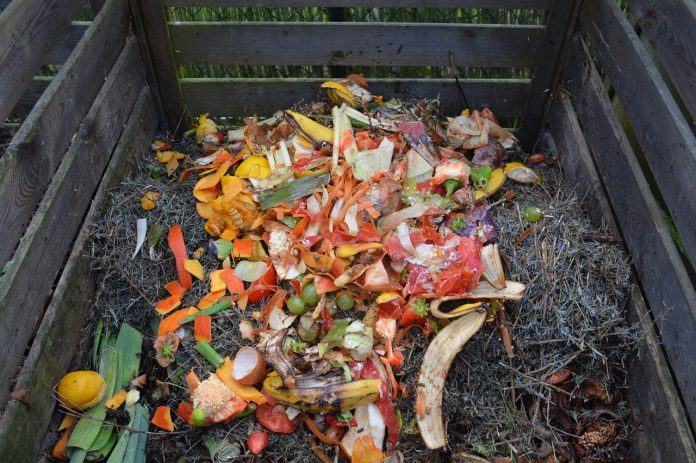Composting is more than tossing a bit of this and a bit of that in a pit in your yard, so you can mix it up and spread it on your garden periodically. There’s actually a formula to maximize nutrients and optimize the rate at which organic material is being broken down. There are plenty of materials you can compost and some you should leave out. If you are considering starting a compost bin, learn how to perfect the recipe for your compost before you get started.
The formula
The ideal compost mixture consists of about 30 parts carbon to 1 part nitrogen. Materials mixed at this ratio are able to compost properly with ideal nutrient levels to be spread on your garden later.
You can achieve this balance by being aware of the carbon-to-nitrogen ratio of common materials and mixing them accordingly.
Straw and sawdust — 150-500 parts carbon to 1 part nitrogen.
Pine needles — 60-110 parts carbon to 1 part nitrogen.
Ground corn cobs — 50-100 parts carbon to 1 part nitrogen.
Oak leaves — 50 parts carbon to 1 part nitrogen.
Young weeds — 30 parts carbon to 1 part nitrogen.
Grass clippings — 25 parts carbon to 1 part nitrogen.
Manure with bedding — 25 parts carbon to 1 part nitrogen.
Vegetable trimmings — 25 parts carbon to 1 part nitrogen.
Animal droppings — 15 parts carbon to 1 part nitrogen.
Legumes — 15 parts carbon to 1 part nitrogen.
A mixture with too much carbon and not enough nitrogen will not heat up and decompose. One example would be a pile of leaves.
On the other hand, a mixture with too much nitrogen will manufacture ammonia. Think of a pile of fresh grass clippings left in a pile. It doesn’t take long for them to turn into a smelly brown mess.
However, add the grass clippings to the pile of leaves and you have a compost pile. The grass clippings give the leaves the added nitrogen they need to cook properly. Grass clippings are also ideal to add to weeds, hay and sawdust for the same reason. Organic materials with higher ratios of carbon to nitrogen rely on materials with increased nitrogen to achieve an optimum rate of decomposition.
Layering your compost
You may not always have a nitrogen-rich material to add every time you add to the compost pile and that’s fine. Layering is another way to ensure healthy decomposition in a compost pile. If you add a layer of leaves or straw, the layer you add on top should be more nitrogen-rich to balance it out. Add grass clippings or vegetable trimmings to your next layer.
Layering compost helps ensure a more even distribution of nitrogen throughout to ensure decomposition. It also makes it easier to mix your compost pile periodically and to collect compost that is ready to use when you need it.
Using an activator
Grass clippings and vegetable trimmings are great to increase the amount of nitrogen but are not readily available throughout the year. So you may need to consider another option for layering, depending on the size of your compost bin and the amount you’re composting. Another option is using an activator.
An activator provides a source of both nitrogen and protein, which help microorganisms and bacteria breakdown and compost material. Alfalfa meal — made from alfalfa hay — is one of the cheapest, fast-acting activators. Other materials you can use as an activator include manure, bone meal, cottonseed meal and blood meal. Every time you add material to your compost pile, dust it with an activator and moisten it to ensure uniform composting.
What to put in your compost pile
Materials to compost
- Apple pomace (a by-product of cider making)
- Bird-cage waste
- Brewery waste
- Corn cobs and husks
- Dust from your vacuum cleaner
- Evergreen needles
- Fabric scraps of wool, felt or silk
- Feathers
- Fruit and vegetable trimmings and scraps
- Garden debris – spent plants and vines, root vegetable tops, corn stalks, etc
- Grape pomace (a by-product of making wine)
- Grass clippings
- Hair
- Hay
- Kitchen waste – fruit and vegetable rinds, parings, eggshells, coffee grounds and filters, tea waste
- Leather scraps
- Dust
- Leaves
- Manure (from horses, cattle, goats, pigs, rabbits, poultry)
- Nut shells
- Oak hulls
- Olive pits
- Peanut hulls
- Pine needles
- Pond weeds
- Rice hulls
- Sawdust, shredded bark, wood chips or rotted wood
- Seaweed, kelp, eelgrass
- Sour milk
- Straw
- Sugar cane
- Tobacco stems
- Wood ash
Materials to leave out of the compost pile
- Animal bones
- Animal waste beside the ones listed above
- Coal ashes
- Diseased garden plants
- Dog and cat waste
- Eucalyptus
- Large pieces of woody material or a lot at one time
- Magnolia leaves
- Newspapers (unless the ink is biodegradable)
- Noxious weeds like bermuda grass, nut grass, morning glory, buttercup, English ivy and other tough-to-stop spreaders.
- Plant material that has been exposed to herbicides or pesticides.











